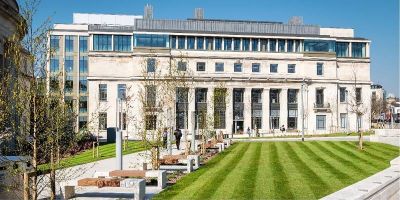Mobile observatory Moon Palace rolls onto campus to reunite with student creatives
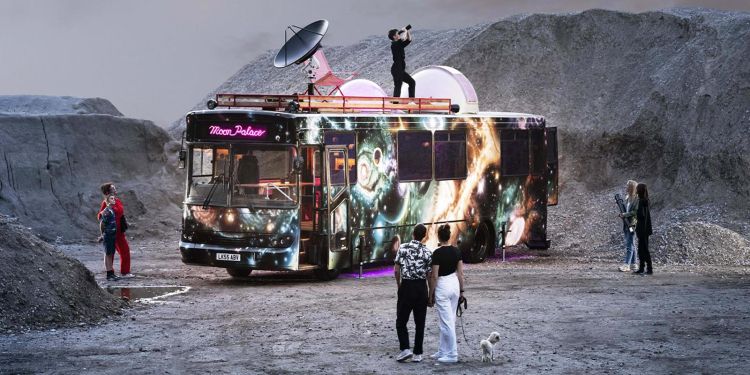
Dazzling artwork that doubles as a mobile observatory will soon arrive on the University campus, after a long journey that involved the hard work of students from the School of Physics and Astronomy.
Moon Palace, a former school bus that has been transformed into a travelling astronomy hub, was commissioned as part of the LEEDS 2023 year of cultural celebrations, and will park up on the University’s Precinct on Tuesday 21 November, between 1:00pm and 5:00pm.
Its tour also kickstarts Smeaton300, a programme of events that celebrate the life, legacy and influences of lifelong astronomer John Smeaton – who coined the phrase Civil Engineering – up to his 300th birthday in 2024.
It is based on an original idea by East Leeds Project and designed by leading artists Heather Peak and Ivan Morison, who assembled a team of artists and scientists, drawing support and expertise from School of Physics and Astronomy and Leeds Astronomical Society.
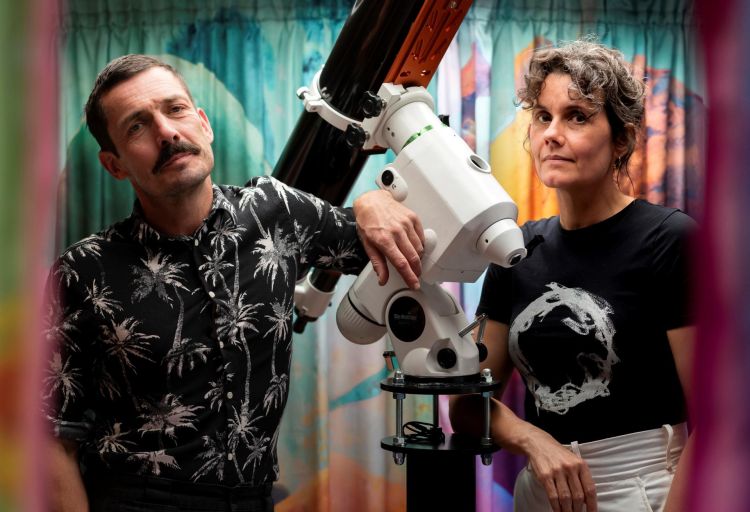
Ivan Morison and Heather Peak standing inside their Moon Palace (Photo credit: Charles Emerson)
Together, the group built a radio telescope that looks at signals coming from different celestial objects from across the universe.
Taking the lead from the School were Solomon Appekey, who completed his MA this year in Astronomy and Astrophysics; Kingsley Ahenkora-Duodu, who is undertaking a PhD in Physics and Astronomy, and Holly Ullyott, a Physics with Astrophysics BSc who is graduating this year.
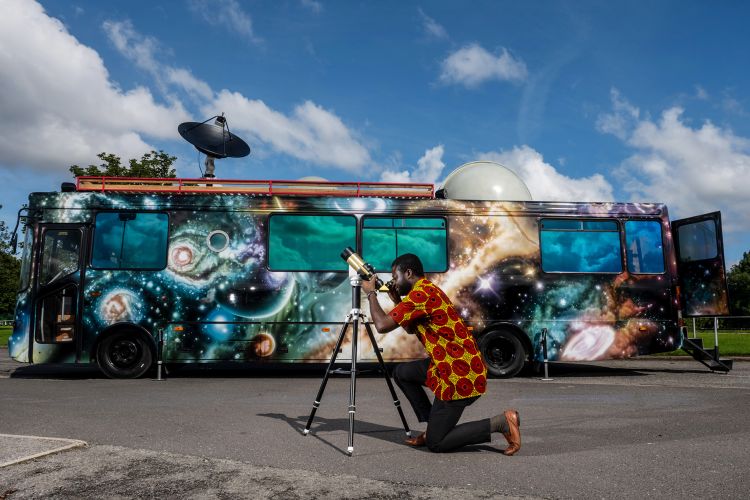
Kingsley Ahenkora-Duodu was one of three Physics and Astronomy students involved in the creation of Moon Palace. (Photo credit: Charles Emerson)
The trio will be reunited with the project when the Moon Palace comes to the Leeds campus, when artists and scientists will lead audiences in both daytime drop-in sessions and night-time galaxy-gazing events. They hope to spark curiosity and stimulate observational skills by combining creativity, art and science, inspiring visitors to look at the world around them in a new way.
One huge and one small dome on the roof make way for a powerful telescope and a radio dish to enable Moon Palace to function as an astronomical observatory that links to other observatories around the world. Audiences can view the galaxy at night, but they will also be able to understand the stars as visual waves on a screen and translated into sound, giving an impression of what the Moon, Sun and stars “sound” like.
Its exterior was hand-airbrushed by artist Kiaran Davies, while a sonic soundscape is being created during the tour by Alex de Little. Inside, its multi-sensory, tactile space evokes the surface of an imaginary planet, and combines wood panelling using timber from Peak and Morison’s forest in west Wales alongside upcycled bus seating, printed silk screens, porcelain lunar lampshades, and more.
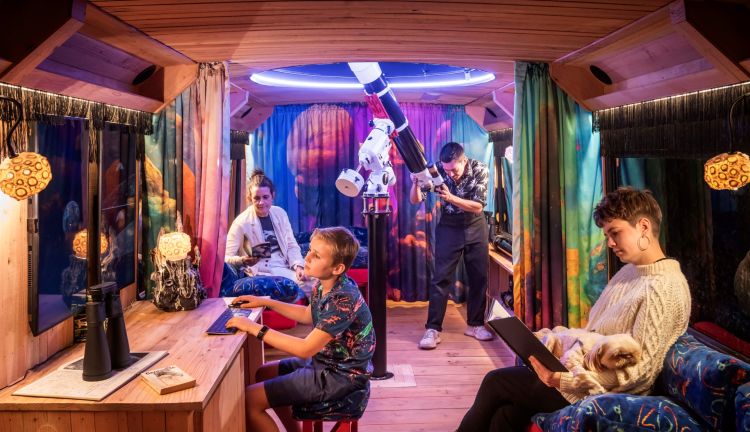
Inside Moon Palace (Photo credit: Charles Emerson)
Moon Palace will be on campus before the School of Physics and Astronomy’s annual Bolton Lecture in Astrophysics. This year’s speaker is Dr Emma Curtis-Lake, who will be sharing insights into the discoveries made during the inaugural year of the new Webb Space Telescope.




